Valley Forge National Historical Park
/Last week – the day following my visit to the Scott Arboretum – I walked around Valley Forge National Historical Park. I’d been there before but had never had time to see all of it. I remembered the cannon that were point at meadows. This time I wondered about how they were maintained. The one I looked at more closely had a fleck of paint that had flaked away and some rusty areas.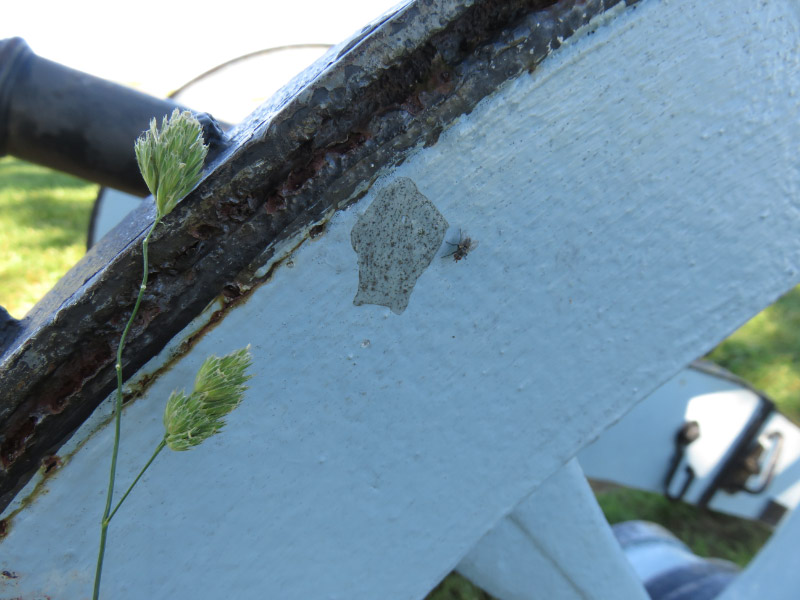
I remembered reconstructed log structures.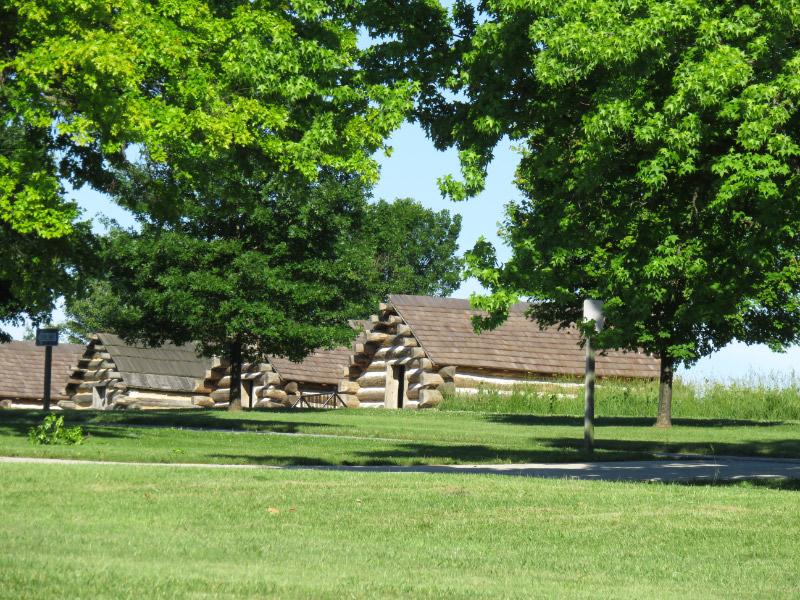
The structures help one imagine how miserable it must have been at this place in winter. The structures were very crowded - lined with crude bunks along the walls - with a crudely made fireplace for warmth.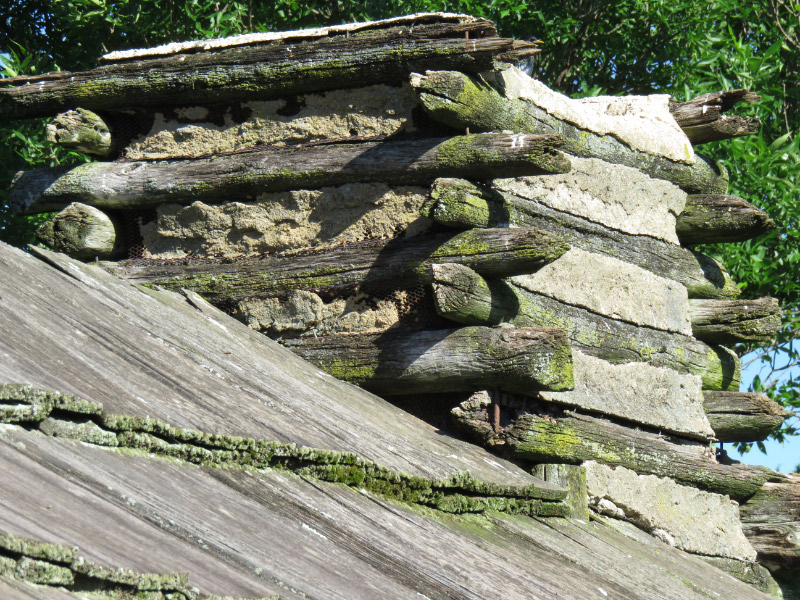
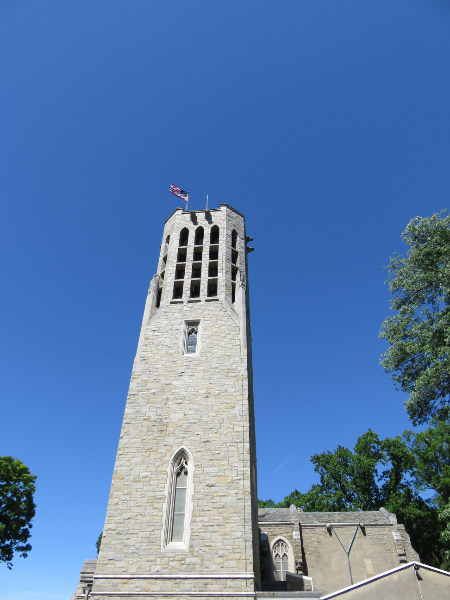 We drove around as far as we could on the road that loops through the park but we came to a section that was closed because of damage to a bridge and construction of a replacement sewer line. We followed the detour signs through a beautiful older neighborhood (one of the highlights of the trip) and back to the visitor’s center to check the map more carefully on how to get to the other parts of the park. My sister was keen to see the DAR tower at the Washington Memorial Chapel.
We drove around as far as we could on the road that loops through the park but we came to a section that was closed because of damage to a bridge and construction of a replacement sewer line. We followed the detour signs through a beautiful older neighborhood (one of the highlights of the trip) and back to the visitor’s center to check the map more carefully on how to get to the other parts of the park. My sister was keen to see the DAR tower at the Washington Memorial Chapel.
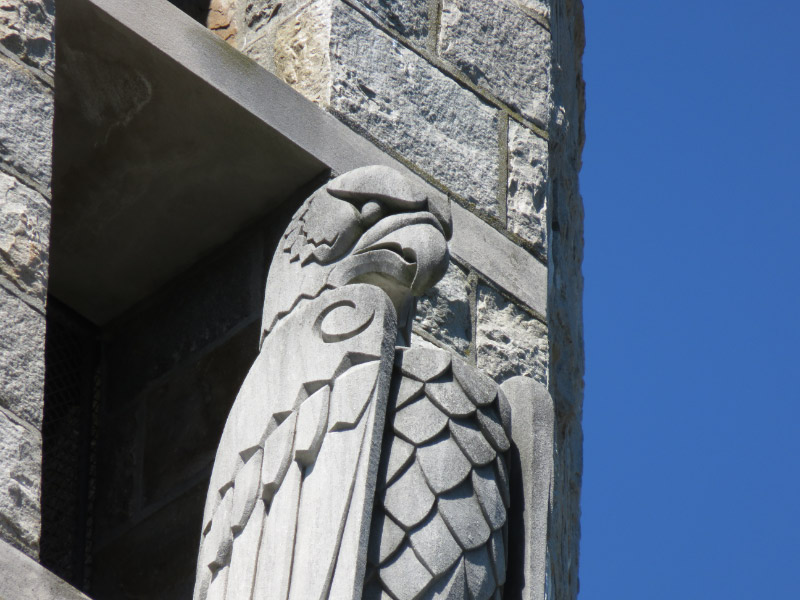
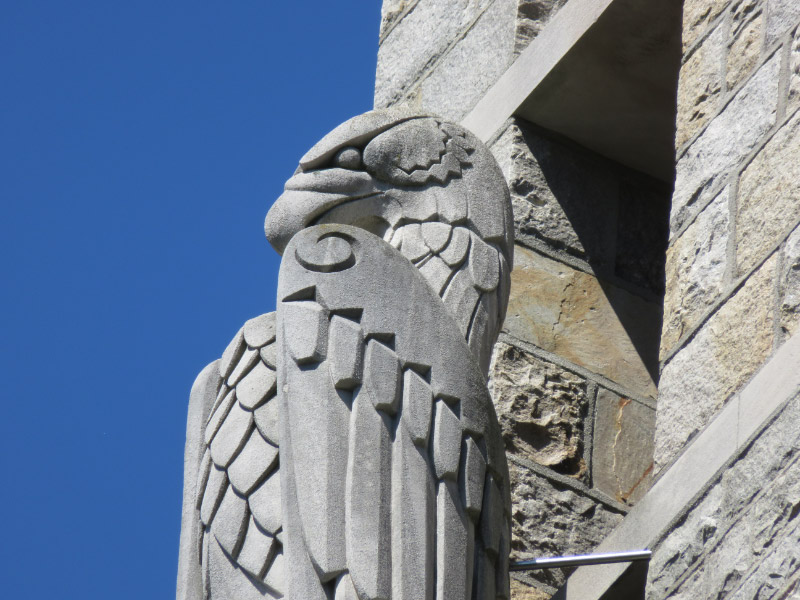 I was fascinated by the eagles on the four corners of the tower.
I was fascinated by the eagles on the four corners of the tower.
Further down on the corner facing the chapel, there is a statue of George Washington.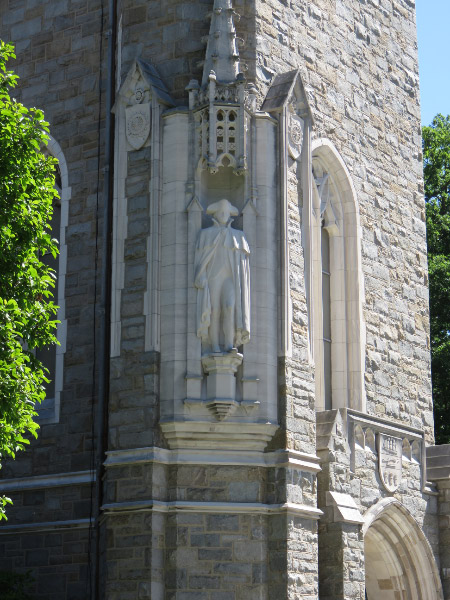
There is a cannon in front of the chapel that points into the main area of the park and an obelisk.
There are numerous cool courtyards with statuary and dedications. The chapel area was getting ready for a Flea Market the next day but even with the extra activity, it was a serene place.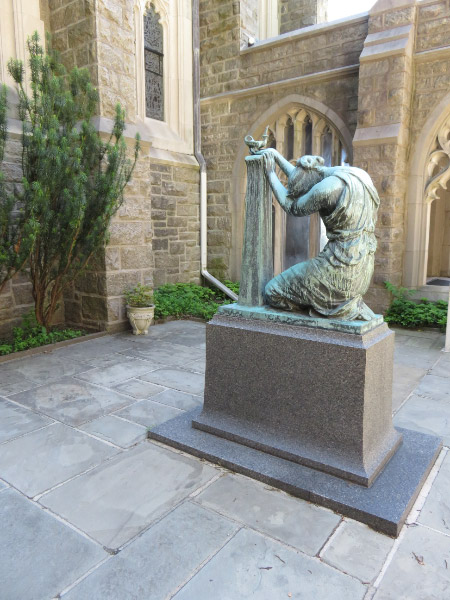
Further along the road was Washington’s Headquarters. There as a statue of George Washington that has been replicated in other places because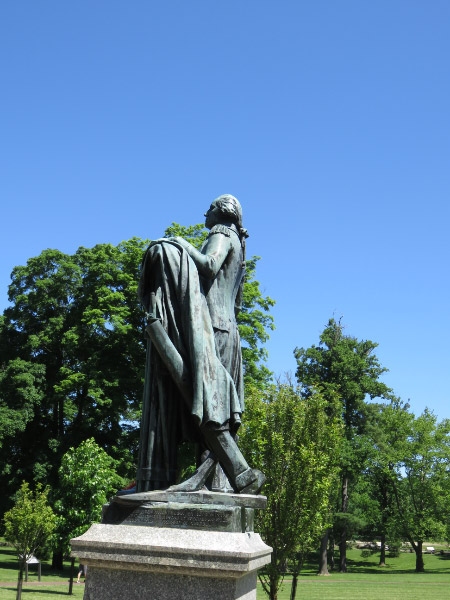
His family indicated that the face depicted him better than any other.
 The headquarters was a house…that was crammed full of people when it was the headquarters. The house part was never changed structurally. The kitchen part (to the left) was ‘modernized’ in the 1800s but is now back to the way it would have been in the 1770s.
The headquarters was a house…that was crammed full of people when it was the headquarters. The house part was never changed structurally. The kitchen part (to the left) was ‘modernized’ in the 1800s but is now back to the way it would have been in the 1770s.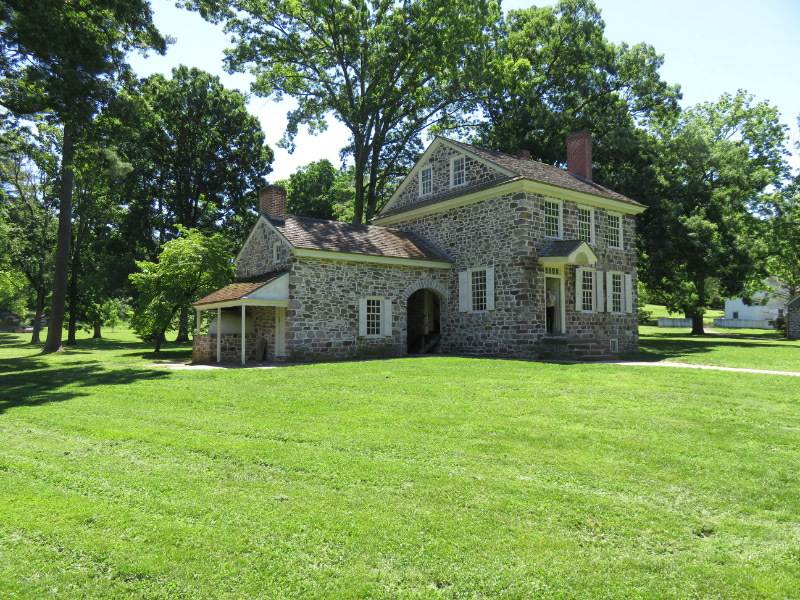
There is a train station near the Headquarters that provided transportation for people to visit the park up to the time it became a National Historical Park. The addition of the railroad created a tall berm between the headquarters area and the Schuylkill River which would not have been there in the 1770s; it changed the relationship that then encampment had of the river but may have protected many of the structures from flooding.


















